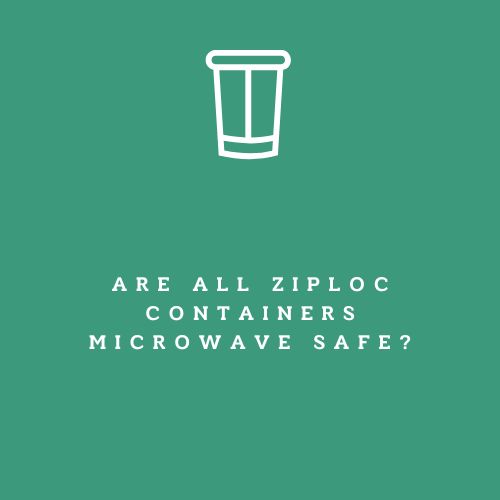
Are All Ziploc Containers Microwave Safe?
Melika GhasemifardZiploc containers are a household name when it comes to food storage. They're known for their convenience and versatility, but a common question many people ask is: "Are all Ziploc containers microwave safe?" This article delves into the details of using Ziploc containers in the microwave, addressing safety concerns best practices and providing a comprehensive guide on how to use these containers without compromising your health or the quality of your food.
What Are Ziploc Containers Made Of?
Ziploc containers are typically made from a type of plastic called polyethylene. This material is chosen for its durability, flexibility, and ability to create an airtight seal. Some Ziploc products are made from polypropylene, another type of plastic known for its high melting point and resistance to chemical reactions, making it a safe option for food storage and reheating.
Are Ziploc Containers Microwave Safe?
The straightforward answer is: not all Ziploc containers are microwave safe. However, many Ziploc containers and bags are designed to be microwaveable. It's crucial to check the product packaging or the container itself for a microwave-safe label. If the container is labeled microwave safe, it means it has been tested and deemed safe for use in a microwave oven.
How to Determine if Your Ziploc Container is Microwave Safe
- Check the Label: Look for a microwave-safe symbol on the container or its packaging. This symbol typically looks like a microwave with wavy lines.
- Read the Instructions: The packaging often includes instructions on how to use the container safely in the microwave.
- Manufacturer's Website: Visit the Ziploc website or the manufacturer's site for detailed product information and usage guidelines.
Best Practices for Microwaving Ziploc Containers
- Ventilation: Always leave the lid slightly open to allow steam to escape. This prevents pressure buildup, which could cause the container to warp or burst.
- Avoid Overheating: Microwave your food in short intervals and check periodically. Overheating can cause the plastic to break down.
- Avoid High-Fat Foods: Foods with high-fat content can reach higher temperatures and potentially damage the container.
- Stirring and Covering: Stir food midway through heating and use a microwave-safe cover to prevent splatters.
Common Misconceptions About Ziploc Containers and Microwaves
- All Plastics are Microwave Safe: Not true. Only plastics labeled as microwave safe should be used.
- Microwaving Plastic Causes Cancer: While overheating plastic can release harmful chemicals, using microwave-safe containers as directed poses no significant health risk.
- All Ziploc Products are Microwave Safe: Only those specifically labeled as such should be used in the microwave.
The Science Behind Microwave-Safe Plastics
Microwave-safe plastics are designed to withstand the heat generated in a microwave without melting or releasing harmful chemicals. These plastics are often made with specific additives that increase their heat resistance and stability.
Final Thoughts
While many Ziploc containers are microwave safe, it’s important to verify each container's safety by checking the label and following recommended guidelines. By doing so, you can safely enjoy the convenience of reheating your meals in Ziploc containers without compromising your health or the quality of your food.
FAQs About Ziploc Containers and Microwaving
Can you microwave Ziploc bags? A: Yes, you can microwave Ziploc bags as long as they are labeled microwave safe. Ensure to follow the instructions for venting.
What happens if you microwave a non-microwave safe container? A: Using a non-microwave safe container can cause it to melt, warp, or release harmful chemicals into your food.
How long can you microwave food in a Ziploc container? A: It's best to microwave food in short intervals (1-2 minutes), checking and stirring frequently to avoid overheating.
Are Ziploc containers BPA-free? A: Most Ziploc containers are BPA-free. Always check the product label to be sure.